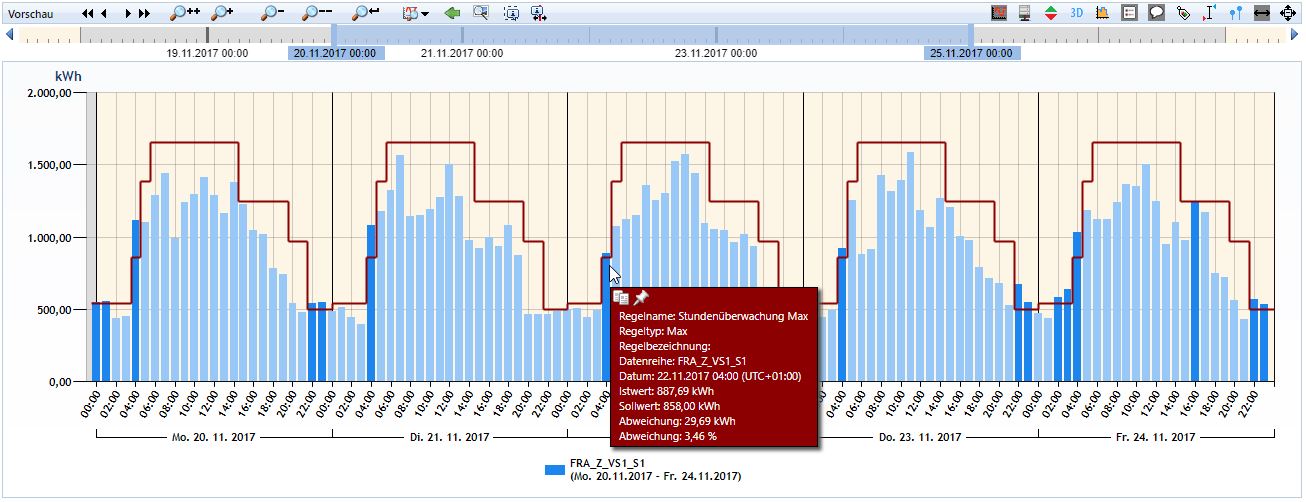Today’s topic is daily business for a majority of our customers: monitoring measurement and sensor data.
Data monitoring is a core task within Energy Data Management. Persons responsible for monitoring consumptions need prompt overviews to respond to abnormal values accordingly. We know, from our experience, that data monitoring in these quantities should be executed automatically assisted with a defined set of rules.
In its basic form this means the incoming data is monitored with the help of fixed minimum and maximum limits. You will find this functionality in many cases alongside with your collection metres. Therefore, you would think that an Energy Data Management System would not be needed. However, due to our extensive project experience we know that an effective monitoring is not possible with fixed values as these ignore natural variations (day/night differences, work day/weekend, etc.).
Therefore, we have developed a monitoring system based on load profiles. These profiles can display the exact natural load variations. The user can configure profiles for typical/desired load patterns or let the system do the work automatically. Any desired amount of nominal values can be set for individual intervals including various time ranges. Hence, a desired load pattern is created displaying the correct day- week- and monthly load flows. All incoming values are directly compared and analysed with their assigned profiles.

Also, not only directly measured values can be monitored but also virtual data series or ad hoc calculated formulas. This allows displaying complex observations and the ability to show dependencies between individual values. A typical used case of the calculated monitoring is comparing current consumption values with previous day values. Therefore, these values are contrasted with each other and analysed for positive or negative deviations (including their percentages).
Common to the complete monitoring is that the system automatically generates helpdesk tickets and assigns these to the respective user when data breaches occur. In addition, defined notifications via SMS or E-Mail can be triggered. This way no abnormalities are lost or overlooked.